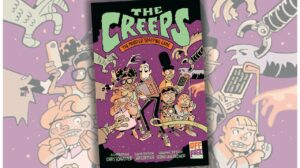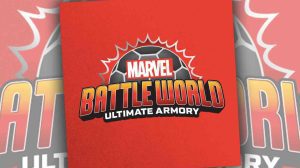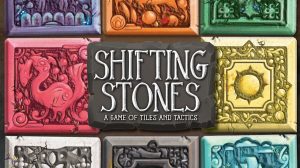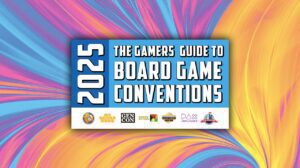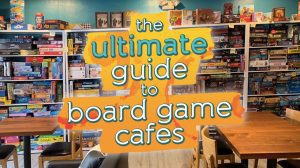Disclosure: Meeple Mountain received a free copy of this product in exchange for an honest, unbiased review. This review is not intended to be an endorsement.
When a board game adaptation of Metal Gear Solid was announced a few years ago, I was skeptical. I am a massive fan of the Metal Gear Solid video games—less so of the original Metal Gear games on the Nintendo Entertainment System, since I’m more of a SEGA and Sony guy than a Nintendo fan. I still believe Metal Gear Solid is the best IP on Sony’s Playstation systems.
The story of the characters featured in the series is legendary, but also legendarily complicated…no one board game, movie, book, etc. could ever fully capture the depth of the rich, wild, and admittedly ridiculous storyline featuring the game’s hero, Solid Snake (yes, I still think this is one of the funniest hero names in gaming) and his attempts to continuously save the world from enemies ranging far and wide. There are terrorist organizations, private military corporations, and missions that take players all over the world, along with some of the best boss battles ever created for a video game.
While I have logged hundreds of hours into what became my favorite series on Playstation, the game is a passion point mainly because of the stealth elements. In fact, when any Metal Gear game devolves into an action game, it becomes significantly less interesting. The gunplay, the streams of bad guys that funnel into an alert zone, the fact that it’s too easy to find ammo in a lot of places while also being too easy to die…in many ways, Metal Gear games fall apart when a player has to pick up a light machine gun and “go loud” to take out enemies, much like the moments when similarly-themed stealth mechanics featured in the video game Hitman turn into a shootout. (Agent 47 is just more interesting in disguise, right?)
Sneaking around an enemy installation is a blast in the Metal Gear games. That’s what I expected to find in the board game adaptation, brought to us by Emerson Matsuuchi, the designer of Specter Ops and the Century: Spice Road series of games.
While Metal Gear Solid: The Board Game is well produced—CMON may be in trouble nowadays as a business enterprise, but to their enduring credit, they know how to put together a miniatures tactical combat package—the mechanics of the board game differ from the video game in meaningful ways, enough so that the board game has now become a sorta-stealth, sorta-action game where players will absolutely need to blast their way through certain situations.
I played eight of the game’s 14 chapters for this review, including missions that required the evasion of patrols, taking on multiple boss characters, and in a case so troubling I still can’t figure out what was going through the minds of the design team, a mission where I had to fire a remote-controlled missile down a hallway, then steer the missile around corners…using die rolls that allowed for very limited mitigation techniques. (Don’t even get me started about the mission where I had to lob grenades at a tank, also using die rolls.)
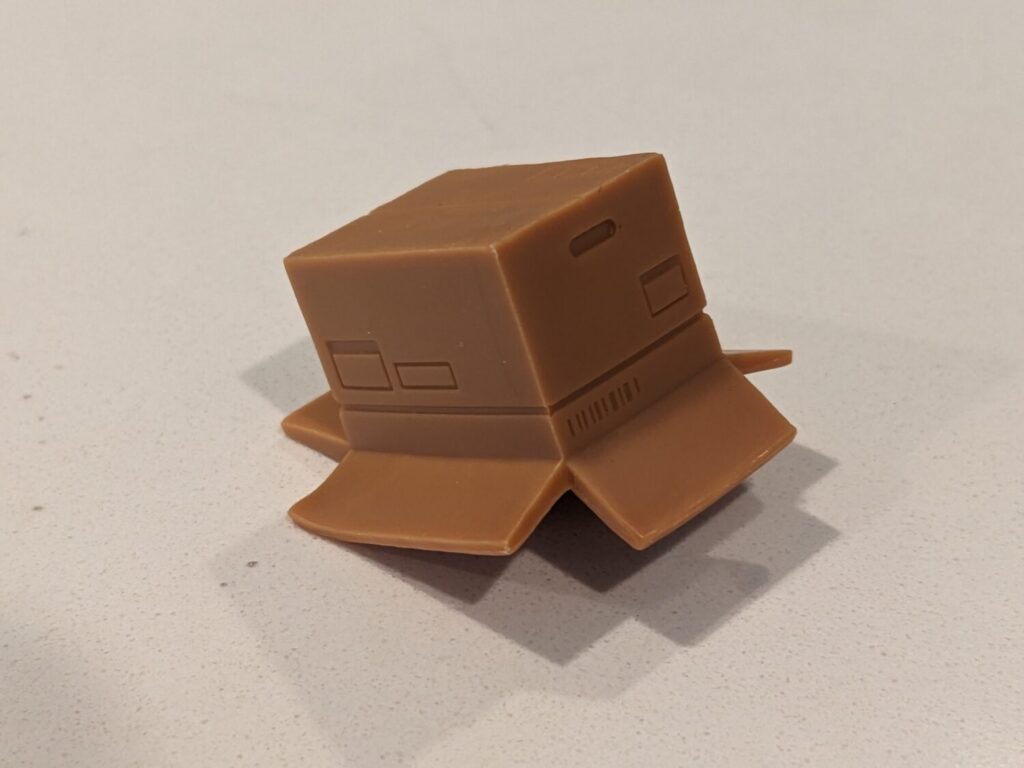
It’s Only Me Out Here
Metal Gear Solid: The Board Game is a 1-4 player objective-based infiltration game featuring an action points system and a whole lot of dice. Players can tackle the game’s system in either one-off mission formats (using the VR Missions structure replicated by the video game) or by jumping into the Shadow Moses campaign, a large campaign-style approach that aligns with the plot of the Metal Gear Solid video game beat for beat.
After doing the tutorial mission in the campaign, I immediately decided that going solo was the only way to fly. Metal Gear Solid: The Board Game is fully cooperative, and much like other campaigns I have worked on recently (such as Fateforge: Chronicles of Kaan or The Elder Scrolls: Betrayal of the Second Era), other players tend to slow down the whole shebang if we are just going to make decisions together anyway.
In a solo game, players take on the role of Solid Snake, and will either play through “Sneaking Missions” (stealth encouraged but not required) or a Boss level. Each mission takes 30-60 minutes to play solo, longer with more players. On each level, there is always at least one objective, sometimes more if there are optional objectives or gated points in a mission (i.e., you can’t exit through objective B until you have picked up hostage A, etc.). With more players, there are usually more guards or a boss with a larger pool of health points.

At this point, I think Metal Gear Solid’s goals diverged from my own. At the start of a mission, I loved anything with the words “you can’t use weapons on this level” or anything that prompted me to believe that getting through a mission without detection was the main goal. However, most missions allow a player to outfit their roster with up to three items each from either a starting pool of resources or any items found on previous missions. So, by the end of the sixth chapter, I had access to grenades, C4, and the Nikita, the launcher that uses remote-controlled missiles.
But, I’m Solid Snake, I muttered to an empty room. All I really want is a silenced .45 SOCOM pistol. Later, sure, hand me the FAMAS assault rifle, if I need something heavier for a boss battle.
Now, some players might want all those weapons right away, so this might become a “not for me” moment in the review. (My son joined me for a second and third attempt of the sixth mission as Meryl, and he loved the fact that Meryl’s starting equipment includes two unsilenced firearms. “When can I use the assault rifle?” was his very first question after the teach.)
For those who want to have the option to stealth their way through a level AND go in guns blazing, I think Metal Gear Solid: The Board Game is for you.
However, stealth only? Eh…that’s going to be really, really tough here.

Look, Over There!
The difficulty with this issue really expands as the map sizes grow. On a turn, a player can take up to four actions—basic stuff like move one space, interact with a map element, punch a guard in the hopes that you can knock them out without making any noise. Great. But after all heroes take their turns, guards activate using a deck that may increase the guard presence in a zone/floor, rotate cameras, or revive guards knocked out on previous turns.
Those actions all make sense. Here’s what doesn’t make sense: the chance that a guard might just, you know, turn around and see you if you are within two spaces of their position. (I am going back through the manuals of the first few video games to remember if this is even possible, but my memory says it is not.)
That might make the board game more interesting, but as a strategy element, nothing made me angrier than when I set up to take down guards during the next round, then revealed a guard action that is essentially “all guards suddenly look around in all directions and spot you if possible.” This action alone killed off Snake twice when I hadn’t planned for it.

Guards also have an unlimited cone of vision if they are looking in your direction. Players expecting guards to only be able to see within a certain range of spaces, look away: here, if a guard at the end of a very long passageway turns to face your general direction, they will have “line of sight” (LOS) to your position and can shoot at you with a standard die roll, with nothing to account for their distance between you and their target. (Of course, the range problem works in both directions, so I’m sure that benefited me from time to time as well. Still, I hated this element of the design.)
Drawing guards out of their patrol routines to shake up their movement patterns was interesting. In particular, hiding behind a corner while a guard investigates the source of the noise, then pouncing on them with a “Silent Takedown” action, was usually satisfying, especially if a spot could be found where a body wouldn’t draw much attention. The rulebook didn’t always make it clear when alert/investigate tokens should be removed, so using common sense and experience with the video game cleared up most of my issues.
I also didn’t love the random nature of a round end—one of the final seven cards in the guard deck instantly fails the mission if revealed. If that card was shuffled into the top of that seven-card deck, I usually got hosed. In one case, I finished the game on the turn before that card was revealed, and I’m sure I would not have won otherwise. This introduced a decent amount of luck into the design (as if combat dice rolls were not enough), so take that into account when considering if this is the game for you.

Oh, It’s Faithful
The best part of Metal Gear Solid: The Board Game? The involvement of Konami and their team members who helped to make the entire affair super legit.
I love that there’s a book full of Codecs. Otacon is here, although his inclusion as a playable character feels like a major stretch. (This is another reason why it feels like Metal Gear Solid: The Board Game is a one, maybe two-player game.) I enjoyed taking on Revolver Ocelot. And even though it is crazy wonky, I appreciated the fact that Matsuuchi tried to include the Nikita remote-controlled missile launcher in this game and make it meaningful. (As fan service, the Nikita is boss.)

The manual is written like all the conversations in the video game between the Colonel and Snake, so those made me laugh. Is there a cardboard box token? Of course there is. Are rations one of the first items you can pick up on a mission? Yessir. Meryl is here, Grey Fox is here, and Metal Gear REX is just around the corner.
So, the game is steeped in all the right historical areas for me as a junkie. As a game, I thought Metal Gear Solid was fun but didn’t demand completion in the way that some of those other campaign games I mentioned earlier did. The bite-sized nature of the missions meant that I was able to leave the game out on my bar for a week while nibbling on Metal Gear morsels with other activities going in the background. And thankfully, administration of the setup and teardown for this game is very simple; you’ll be up and running in no time.
Metal Gear Solid: The Board Game doesn’t make any waves in the cooperative tactical mission game space, but for fans of the source material, give this a look. Added bonus: play this game using the soundtracks from the other games, to add flavor to the room while sneaking around Shadow Moses. I had fun with it, and now I’m wondering if we will get board games representing the other iconic titles in the series.





